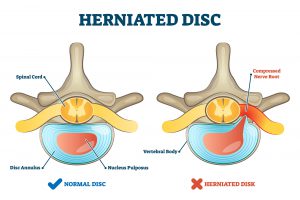Interview with Dr. Brett Helfer, Musculoskeletal Radiologist at ZP
Neck and low back pain are extremely common complaints. Close to one-half of all working Americans admit to having back pain symptoms each year. Back pain accounts for more than 250 million lost work days per year and experts estimate that up to 80% of the population will experience back pain at some points in their lives.
How do we diagnose back pain?
The primary modalities we use to diagnose what is causing someone’s back pain are X-ray, Cat Scan, and MRI. X-ray and Cat Scan are very proficient at diagnosing fractures and degenerative disc disease, while MRI is the gold standard for imaging the spine as it provides valuable information about not only the bones, but the soft tissues as well.
What are some of the main causes of back pain?
There is a myriad of pathology responsible for low back pain. The most common cause is degenerative disc disease, or age-related degeneration of the intervertebral discs and spinal stenosis (narrowing of the spinal canal). Disc herniations and compression fractures following trauma are also common. Other pathology includes nerve impingment (sciatica), stress fractures, arthritis of the facet joints, ligament tears, muscle tears, and muscle spasm. Muscle spasm is common and usually diagnosed clinically, not with imaging. Sometimes a patient may have muscular spasm and no abnormalities on their imaging studies.

What can one do to be preventative?
If you have persistent back pain or new onset back pain it is important to seek medical attention as there are many treatments available with medication or minimally invasive procedures. If you do not have back pain or have had back pain in the past and would like to avoid recurrent symptoms, there are many proactive steps one can take. Stretching before and after strenuous physical activity and making back stretches or yoga a part of your daily routine is one way to prevent problems. Likewise, having an active life-style and keeping off excess body weight is also very important. Certain foods and dietary supplements such as Turmeric may have anti-inflammatory properties. You shouldn’t lift anything that is beyond your capability, but if you do lift heavy things for a living it’s important to have proper technique and utilize one’s legs rather than relying solely on the back muscles. Other things to keep in mind include developing a strong core, using appropriate footwear, following a non-inflammatory diet, and getting adequate sleep which includes finding a mattress and pillow that suit your biomechanics and allow for restful, comfortable sleep.

How often is back surgery needed and what are some other options?
I always tell patients that back surgery should be a last resort after all other treatment options have failed. There are many cases of “failed back surgery” or persistent pain despite surgery and invasive interventions can lead to complications and future problems. Sometimes however, it is unavoidable. In cases where there has been a severe trauma, the patient has intractable pain, nerve symptoms (radiculopathy), or a spinal instability, surgery may be the only answer and can have positive outcomes in hands of an experienced surgeon. If you are considering an elective spinal surgery or fusion, there are many other treatments, some minimally invasive that you should try first depending on the specific issue you might have. Options available include anti-inflammatory medications, physical therapy, chiropractic adjustments, epidural injections, kyphoplasty for compression fractures, facet rhizotomy and nerve ablations. Minimally invasive surgeries represent the vast majority of back surgeries done today and may include decompression of the spinal canal by removing a small portion of bone or a microdiscetomy where a portion of the damaged disc is removed to relieve pain and pressure on a nerve. A spinal fusion is more invasive and should be reserved for cases that have failed other treatments.
